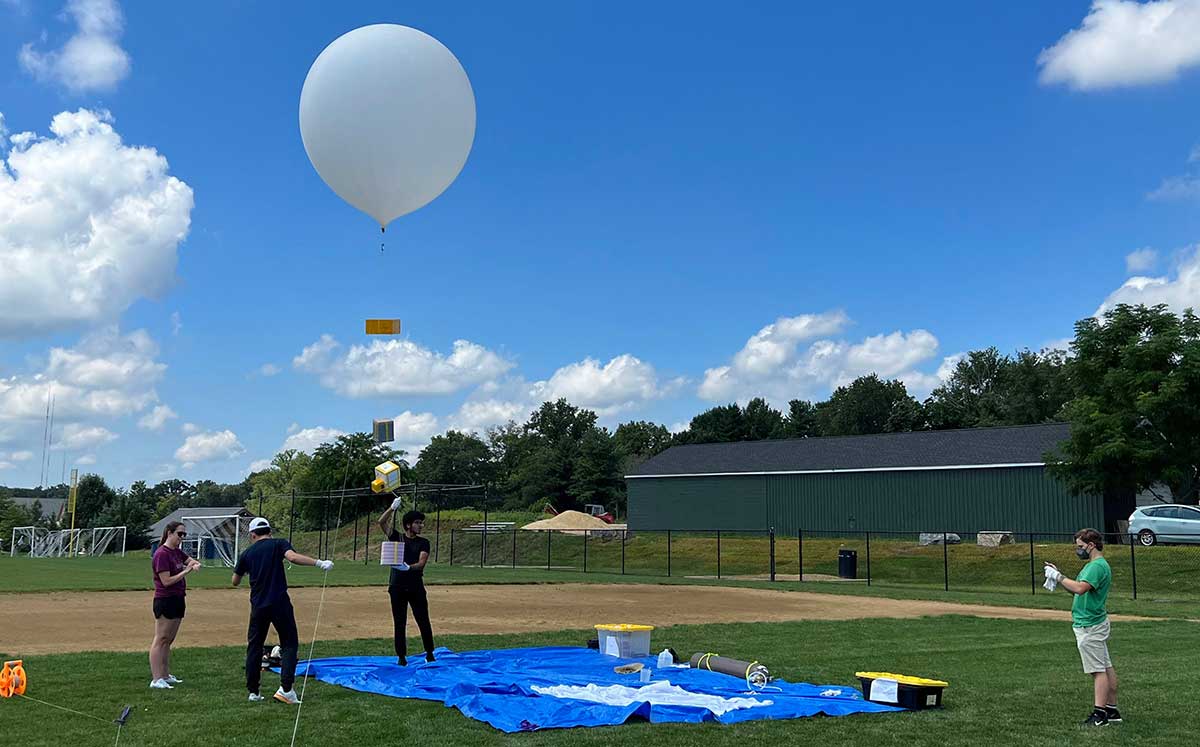A team of Drexel University engineering students are traveling to Texas
this week to launch a high-altitude balloon during the October 14 solar
eclipse. Their goal is to study the rapid changes in ozone chemistry that
occur when sunlight is temporarily blocked by the moon during an eclipse.

Ozone is produced in the stratosphere through a chemical reaction involving
sunlight. The Drexel team hypothesizes that ozone concentrations will drop
rapidly when sunlight cuts off, and they plan to measure this change using
an ozonesonde instrument attached to their balloon. The findings will
provide insights into ozone production and degradation mechanisms.
The balloon payload will also include a PTERODACTYL instrument. PTERODACTYL
stands for "Payload To Enable Recording Of Data And Communication Telemetry
Y(While) Lofted." It is equipped with sensors to measure the balloon's
location via GPS, temperature, and other atmospheric conditions during the
flight. The data gathered by PTERODACTYL will allow the team to correlate
the ozone measurements with the environmental conditions at different
altitudes and to keep track of their experiment during its untethered
flight.
The team has refined their ballooning skills over several tethered test
launches near campus. The tethered tests have enabled them to fine-tune the
instruments and ground communications prior to launch.
"The logistics of launching a balloon, having it at the right altitude at
the right time and location during an eclipse is super tricky – so we need
practice with that," says Richard Cairncross, PhD, professor of chemical
and biological engineering and the project lead. "We also need to confirm
that all the equipment works properly and can handle the demanding
high-altitude conditions."
The experiment is part of the Nationwide Eclipse Ballooning Project (NEBP),
which engages college students in hands-on engineering and atmospheric
science activities during solar eclipses. The nationwide ballooning project
involves over 100 college teams and is led by the Montana Space Grant
Consortium. The Drexel team is collaborating with a science class from
Springside Chestnut Hill Academy on the project.
Serenity Baruzzini, a fourth-year general engineering major who is minoring
in STEM education, is grateful for the opportunity to work with younger
students. "This project allows me to experience both the technical
engineering work and educational outreach components," she said.
The launch will help the team finalize their choices of instrumentation and
the design of their payload before the total solar eclipse on April 8,
2024.